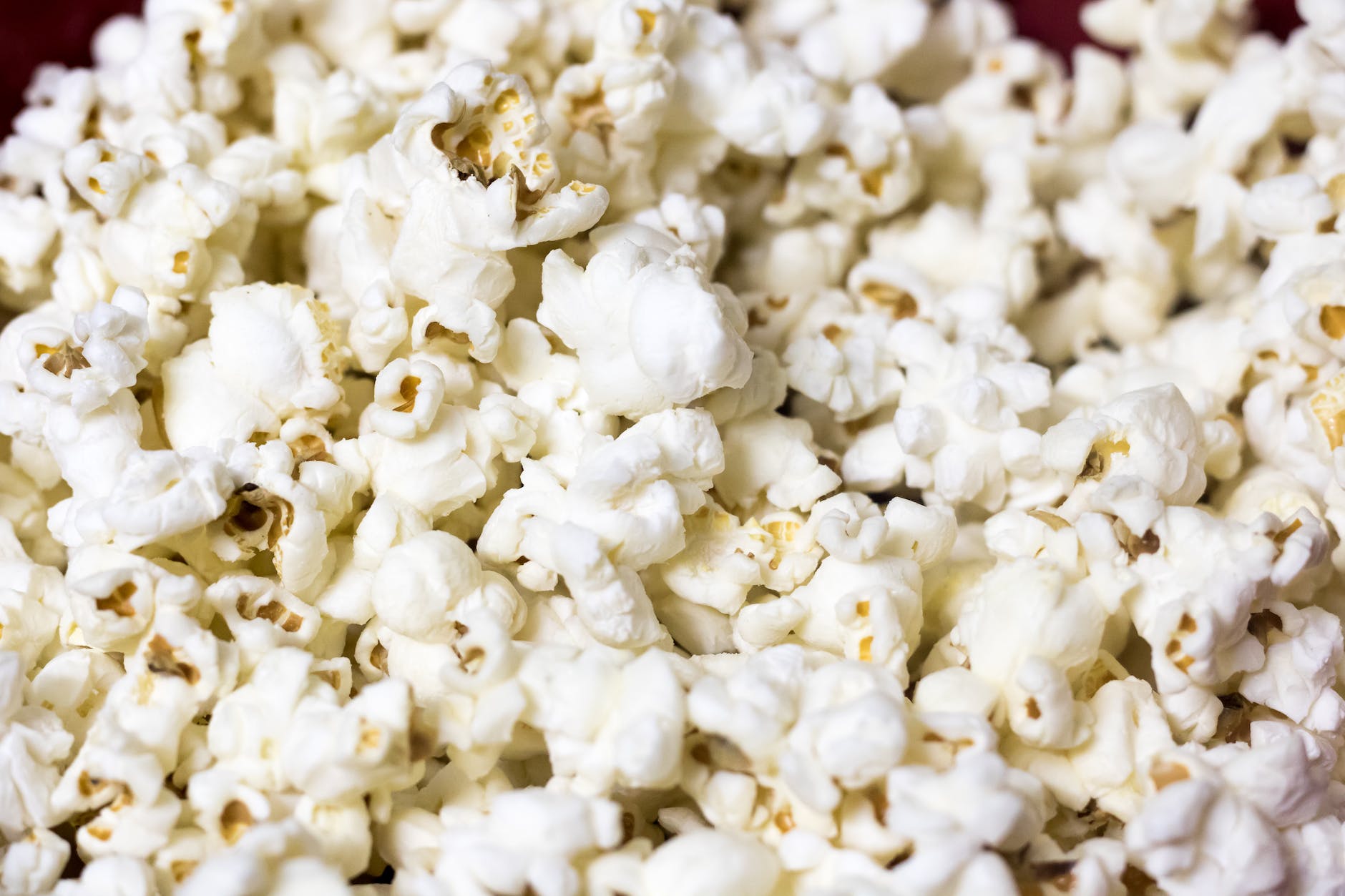
GI vs. GL: Understanding the Impact on Your Blood Sugar
When it comes to understanding how foods affect your blood sugar, two terms often come into play: the Glycemic Index (GI) and the Glycemic Load (GL). While they might sound similar, they have distinct differences that can influence your dietary choices, especially if you’re managing diabetes, aiming for weight loss, or just trying to maintain a healthy lifestyle.
Glycemic Index (GI): The Speedometer of Sugar Absorption
Think of GI as a speedometer that measures how fast a carbohydrate-containing food causes an increase in blood sugar levels. Foods are rated on a scale of 0 to 100, with pure glucose arbitrarily assigned a value of 100. This rating indicates the relative speed at which the body breaks down the carbs in a food into glucose.
- High GI Foods (70 and above): These foods break down quickly during digestion, leading to a rapid increase in blood sugar. Think white bread, pretzels, and short-grain rice.
- Medium GI Foods (56-69): These foods have a moderate effect on blood sugar. Examples include quick oats and brown rice.
- Low GI Foods (55 and below): These foods break down slowly, releasing glucose gradually into the bloodstream, like lentils, most fruits, and non-starchy vegetables.
Understand more about Glycemic Index and Secrets of Weight Loss.
Glycemic Load (GL): The Bigger Picture of Blood Sugar Management
If GI is the speedometer, then GL is the complete dashboard that shows not just the speed, but also the volume of fuel being used. GL takes into account the GI of a food as well as the amount of carbohydrates in a typical serving size.
To calculate GL, you use the following formula:
GL=(GI×the amount of carbohydrate in one serving)÷100
- Low GL (1-10): Foods in this category have a minimal impact on blood sugar levels. Incorporating more low-GL foods into your diet can help maintain stable energy levels throughout the day, making them ideal for weight management and overall health. Examples include most non-starchy vegetables, some fruits like cherries and grapefruit, and legumes.
- Medium GL (11-19): These foods have a moderate effect on blood sugar levels. They can be included in a balanced diet but should be paired with low-GL foods or healthy fats and proteins to mitigate blood sugar spikes. Examples include whole wheat products, sweet potatoes, and some fruits like bananas and pineapple.
- High GL (20+): High-GL foods cause significant spikes in blood sugar levels. They should be consumed sparingly, especially for individuals managing diabetes, prediabetes, or looking to stabilize their energy levels. Examples include white bread, short-grain rice, and baked goods made with refined flour.
Glycemic Load Calculator
The Glycemic Load Calculator is a handy tool designed to help you determine the glycemic load (GL) of various food items based on their glycemic index (GI) and portion size. It is especially useful for individuals managing their blood sugar levels or following a low glycemic diet. This tool would help you understand the total GL of your individual food items as well as what happens when you combine them in certain quantities.
How it Works:
- Search for Food Items: Start by typing the name of the food item you want to include in your calculation into the search box. The tool will display a list of matching food items with their GI and GL values.
- Select Food Items: Click on the desired food item from the search results to add it to your selection. You can add multiple items to your list. For eg. for a salad with Nuts, Apples, and Honey – you will choose all three.
- Enter Portion Size: After selecting a food items, you’ll be prompted to enter the portion size in grams. This step allows for a more accurate calculation of the glycemic load based on your intended serving size. I
- View Total Glycemic Load: As you add food items and specify their portion sizes, the tool dynamically calculates and displays the total glycemic load of your selection. This value reflects the combined effect of all selected food items on blood sugar levels.
- Clear Selection: If needed, you can easily clear your selection and start over by clicking the “Clear All” button.
Once you have the value, you can see what category your meal is expected to fall into – Low, High, or Medium.
Glycemic Load Calculator
Calculate the glycemic load of your food items based on their glycemic index (GI) and portion size.
Selected Items
The total glycemic load (GL) is a measure of how much carbohydrate a food will provide.
Note: If you are not able to find the food item you are looking for inb this calculator, leave a comment below and we will make efforts to add them as soon as we can. Also this is just a tool for you to understand, we advice you to rely on serious and professional medical advice before you make any changes or alter your diet.
Benefits:
- Accuracy: Provides a more accurate assessment of the glycemic load by accounting for both the GI and portion size of each food item.
- Convenience: Accessible online tool that streamlines the process of glycemic load calculation, saving time and effort.
- Educational: Helps users understand the impact of different foods on blood sugar levels and supports informed dietary choices.
Whether you’re managing diabetes, seeking to balance your energy levels, or simply curious about the glycemic impact of your meals, the Glycemic Load Calculator is a valuable resource for optimizing your diet and overall health.
Demystifying Glycemic Load: Practical Examples and Implications
To truly understand the practical applications of Glycemic Load (GL), let’s roll up our sleeves and dive into some real-life food examples. By breaking down the calculation, we can see the real-world implications of this measurement for our daily food choices.
The Formula in Action
Recall the formula for GL:
GL=(GI×the amount of carbohydrate in one serving (in grams))÷100
Example 1: Watermelon
Watermelon has a high GI of 72, which may initially cause alarm. But let’s calculate its GL:
- Carbohydrates per serving (120g of watermelon): 6 grams
- GI: 72
Using our formula:
GL=(72×6)÷100=4.32
So, a standard serving of watermelon has a GL of 4.32, which is low. This means that despite its high GI, watermelon doesn’t raise your blood sugar significantly when eaten in typical servings.
Implications:
You can enjoy watermelon without worrying about a major spike in blood sugar levels. It’s refreshing, hydrating, and diabetes-friendly in moderation.
Example 2: Brown Rice
Brown rice has a moderate GI of 50. Let’s calculate its GL:
- Carbohydrates per serving (1 cup cooked, approximately 150g): 45 grams
- GI: 50
GL=(50×45)÷100=22.5
A cup of brown rice has a GL of 22.5, which is high.
Implications:
Even though brown rice is often touted as a healthy whole grain with a moderate GI, its GL tells us that it can still have a significant impact on blood sugar levels, especially in typical portions eaten.
Example 3: Carrots
Carrots have a medium GI of 47, but let’s look at the GL:
- Carbohydrates per serving (one medium carrot, approximately 61g): 6 grams
- GI: 47
GL=(47×6)÷100=2.82
A medium carrot has a GL of 2.82, which is low.
Implications:
Carrots can be eaten without much worry about blood sugar spikes, making them a great snack for those on a blood sugar-conscious diet.
Making Informed Choices with GL
What these examples show us is that the Glycemic Load gives us a more nuanced view of how our body might react to different foods. A food with a high GI might not necessarily have a high GL if the amount of carbohydrates per serving is low. Conversely, a food with a medium GI could have a high GL if eaten in large portions.
The Takeaway
When planning meals and making dietary choices, especially for individuals managing diabetes or insulin resistance, considering the GL offers a more accurate gauge of how the food may influence blood sugar levels. This empowers you to choose foods that keep your blood sugar levels more stable throughout the day, which is crucial for long-term health and energy management. Remember, it’s not just about the type of carbohydrate, but also the quantity that counts.
Why Both GI and GL Matter
Understanding both GI and GL can provide a more complete strategy for blood sugar management:
- GI for Speed: GI is a useful measure when you need to know how quickly a food might spike your blood sugar. This can be particularly important for diabetics who need to match their insulin timing with meals.
- GL for Volume: GL helps you understand how much a serving of food is likely to affect your blood sugar levels. This can be more useful for meal planning since it considers portion size.
Harmonizing GI and GL in Your Diet
To keep your blood sugar in check, consider both the GI and the GL of foods:
- Choose low to medium GI foods: These are generally better for blood sugar control.
- Pay attention to portion sizes: Even low-GI foods can lead to blood sugar spikes if consumed in large quantities.
- Balance your meals: Combine higher GI foods with proteins, fats, and fiber to slow down the absorption of glucose.
By using the GI and GL in tandem, you can make informed decisions that go beyond just “good” or “bad” carbs, tailoring your diet to fit your health needs with precision and care. Whether you’re filling your plate with low-GI vegetables or treating yourself to a moderate-GL fruit, you’ll be doing so with the insight needed to maintain a stable and healthy blood sugar level.
Here is a list of some common foods and their GI and GL values that we generated or found via AI for quick and easy reference. For actual inpact you might want to do a CGM or other test on your own body to see how it behaves for a particular food item.
Fruits:
- Apple, GI: 36, GL: 2 – A crunchy delight packed with fiber, aiding digestion and heart health.
- Banana, GI: 51, GL: 12 – Energizing and potassium-rich, perfect for active lifestyles.
- Strawberries, GI: 41, GL: 3 – Sweet and nutrient-packed, promoting skin health and immunity.
- Oranges, GI: 43, GL: 3 – Citrus gems high in vitamin C, boosting immune defense.
- Peach, GI: 42, GL: 5 – Juicy and refreshing, with vitamins A and C for overall wellness.
- Mango, GI: 51, GL: 7 – Tropical sweetness brimming with vitamins for digestive health.
- Watermelon, GI: 76, GL: 4 – Hydrating and refreshing, with a high GI but low carb content.
- Grapes, GI: 49, GL: 8 – A cluster of antioxidants, supporting heart health and hydration.
- Blueberries, GI: 53, GL: 5 – Antioxidant powerhouses, enhancing cognitive function.
- Raspberries, GI: 32, GL: 3 – Fiber-rich, aiding in weight management and digestion.
- Kiwi, GI: 50, GL: 7 – A vitamin C powerhouse, with enzymes that aid digestion.
- Pineapple, GI: 59, GL: 6 – Sweet and tangy, rich in digestion-improving bromelain.
- Cherries, GI: 22, GL: 9 – Low GI, packed with antioxidants, aiding sleep and recovery.
- Papaya, GI: 59, GL: 10 – Enzyme-rich for digestive health, with a tropical flavor.
- Plum, GI: 40, GL: 2 – Sweet with a hint of tartness, offering dietary fiber and vitamins.
- Pomegranate, GI: 18, GL: 4 – Nutrient-dense, with powerful anti-inflammatory properties.
- Apricot, GI: 34, GL: 3 – A fiber-rich fruit, perfect for blood sugar control.
- Grapefruit, GI: 25, GL: 3 – Low GI, aiding weight loss and promoting heart health.
- Pear, GI: 38, GL: 4 – Soft and juicy, with a high fiber content for digestion.
- Blackberries, GI: 25, GL: 4 – High in vitamins C and K, fiber, and antioxidant-rich.
- Cantaloupe, GI: 65, GL: 4 – Sweet and hydrating, with vitamins A and C for skin and vision.
- Fig, GI: 61, GL: 16 – Unique in flavor, high in fiber, and rich in minerals.
- Nectarine, GI: 43, GL: 4 – Smooth-skinned and succulent, with a good vitamin mix.
- Tangerine, GI: 42, GL: 3 – A burst of citrus goodness, promoting healthy skin and vision.
- Lemon, GI: 20, GL: 1 – High in vitamin C, perfect for detoxification and boosting immunity.
Vegetables:
- Carrots, GI: 39, GL: 2 – Crunchy and rich in beta-carotene, supporting eye health.
- Broccoli, GI: 10, GL: 1 – Packed with vitamins C and K, and fiber for digestive health.
- Spinach, GI: 15, GL: 1 – Iron-rich for energy, with ample vitamins for overall vitality.
- Kale, GI: 15, GL: 1 – A nutrient powerhouse, offering detoxification benefits.
- Zucchini, GI: 15, GL: 1 – Low in carbs, versatile in recipes, promoting heart health.
- Cauliflower, GI: 10, GL: 1 – Offers a low-carb alternative to grains and supports hormonal balance.
- Asparagus, GI: 15, GL: 1 – Aids in digestion and is beneficial for a healthy pregnancy.
- Bell Peppers, GI: 40, GL: 2 – Vibrant and vitamin-rich, enhancing immune function.
- Garlic, GI: 30, GL: 1 – Flavorful with heart health and blood pressure benefits.
- Onion, GI: 10, GL: 2 – Adds depth to dishes; supports bone and heart health.
- Tomato, GI: 15, GL: 1 – Lycopene-rich for heart health and reduced cancer risk.
- Eggplant, GI: 15, GL: 1 – Fiber-rich, versatile in cooking, supports brain health.
- Cucumber, GI: 15, GL: 1 – Hydrating and refreshing, perfect for skin health.
- Lettuce, GI: 15, GL: 1 – A hydrating base for salads, rich in vitamins A and K.
- Sweet Potato, GI: 54, GL: 10 – High in beta-carotene, offering sustained energy.
- Mushroom, GI: 15, GL: 1 – Low in calories, great for immune support and satiety.
- Green Beans, GI: 15, GL: 3 – Crunchy and full of fiber, supporting heart health.
- Brussels Sprouts, GI: 15, GL: 2 – Offers cancer-fighting antioxidants and is high in fiber.
- Pumpkin, GI: 75, GL: 3 – Fiber-rich and versatile, with a sweet, earthy flavor.
- Radish, GI: 15, GL: 1 – Peppery and crisp, aids in digestion and detoxification.
- Celery, GI: 15, GL: 1 – Low in calories but rich in hydration and vitamins.
- Beetroot, GI: 61, GL: 5 – Earthy and sweet, boosts stamina and supports brain health.
- Squash, GI: 15, GL: 2 – Rich in vitamins A and C, with a sweet, nutty flavor.
- Cabbage, GI: 10, GL: 1 – Detoxifying, with cholesterol-lowering benefits.
- Artichoke, GI: 15, GL: 3 – High in fiber and nutrients, supports liver health and digestion.
Seeds
- Chia Seeds, GI: 1, GL: 1 – Omega-3 rich, boosting heart health and hydration.
- Flaxseeds, GI: 0, GL: 0 – Loaded with fiber and omega-3s, supporting digestion and hormonal balance.
- Pumpkin Seeds, GI: 10, GL: 1 – A magnesium powerhouse, enhancing sleep and heart health.
- Sunflower Seeds, GI: 20, GL: 2 – High in vitamin E, promoting skin health and immune function.
- Sesame Seeds, GI: 35, GL: 3 – Rich in calcium, beneficial for bone health.
- Hemp Seeds, GI: 0, GL: 0 – Complete protein source, rich in healthy fats.
- Quinoa, GI: 53, GL: 13 – A seed that’s a complete protein with all essential amino acids.
Nuts
- Almonds, GI: 0, GL: 0 – Supports heart health with healthy fats and vitamin E.
- Walnuts, GI: 0, GL: 0 – Omega-3 fatty acids for brain health and reducing inflammation.
- Cashews, GI: 22, GL: 9 – Good for bone health with iron and magnesium.
- Pecans, GI: 0, GL: 0 – Antioxidants for anti-aging and reducing disease risk.
- Hazelnuts, GI: 0, GL: 0 – Loaded with vitamins and healthy fats for heart health.
- Peanuts, GI: 7, GL: 1 – High in biotin and healthy fats, despite being a legume.
- Brazil Nuts, GI: 0, GL: 0 – High selenium content for thyroid health.
- Pistachios, GI: 15, GL: 4 – Good for heart health, lower in calories.
- Macadamia Nuts, GI: 0, GL: 0 – Rich in monounsaturated fats for improved heart health.
- Pine Nuts, GI: 15, GL: 2 – Contains pinolenic acid which may help suppress hunger.
Dried Fruits
- Raisins, GI: 64, GL: 28 – Iron-rich, aiding in digestion and energy.
- Dried Apricots, GI: 32, GL: 9 – High in fiber, promoting eye health.
- Dates, GI: 42, GL: 18 – Nutrient-dense, great for energy and brain health.
- Dried Figs, GI: 61, GL: 16 – High in fiber, beneficial for digestive health.
- Prunes, GI: 29, GL: 10 – Known for digestive benefits and antioxidant content.
- Dried Coconut, GI: 42, GL: 9 – Provides medium-chain triglycerides for energy and brain function.
- Dried Cranberries, GI: 65, GL: 24 – Often sweetened; high in antioxidants for urinary tract health.
- Goji Berries, GI: 29, GL: 13 – Packed with antioxidants, vitamins, and minerals for eye health and immune support.
Millets
- Pearl Millet (Bajra), GI: 54, GL: 12 – Rich in protein and fiber, aids in controlling diabetes.
- Finger Millet (Ragi), GI: 104, GL: 25 – High calcium content, excellent for bone health.
- Foxtail Millet, GI: 50, GL: 15 – Gluten-free, with a high mineral content, supports immunity.
- Sorghum (Jowar), GI: 62, GL: 10 – Antioxidant-rich, cholesterol-lowering effects.
- Barnyard Millet, GI: 41, GL: 10 – High fiber content, beneficial for weight management.
- Proso Millet, GI: 70, GL: 12 – Provides essential amino acids and is easy to digest.
- Little Millet, GI: 55, GL: 17 – Rich in B-vitamins, potassium, and iron, supports metabolism.
- Kodo Millet, GI: 59, GL: 20 – Good source of magnesium, helps in diabetes management.
- Teff, GI: 74, GL: 22 – High in protein and calcium, suitable for gluten-free diets.
- Amaranth, GI: 97, GL: 21 – Loaded with proteins and lysine, improves heart health.
Grains & Rice
- Brown Rice, GI: 50, GL: 16 – Whole grain, rich in antioxidants and aids in weight loss.
- White Rice, GI: 72, GL: 29 – Quick energy source, less nutritional than brown rice.
- Basmati Rice, GI: 58, GL: 22 – Aromatic, with a lower GI, suitable for moderate consumption.
- Jasmine Rice, GI: 89, GL: 45 – Known for its fragrant aroma, higher GI.
- Wild Rice, GI: 57, GL: 12 – Rich in antioxidants, protein, and dietary fiber.
- Black Rice, GI: 42, GL: 12 – High in anthocyanins, supports heart and liver health.
- Red Rice, GI: 55, GL: 21 – Contains antioxidants and can help reduce inflammation.
- Quinoa, GI: 53, GL: 13 – A complete protein with a low GI, good for blood sugar control.
- Barley, GI: 28, GL: 12 – Lowers blood sugar and cholesterol, high in beta-glucan.
- Oats, GI: 55, GL: 4 – Offers soluble fiber, beneficial for heart health and digestion.
- Buckwheat, GI: 49, GL: 13 – Gluten-free, good for cardiovascular health.
- Bulgur Wheat, GI: 48, GL: 12 – Quick cooking, high in fiber and protein.
- Spelt, GI: 54, GL: 15 – High in protein and minerals, with a nutty flavor.
- Freekeh, GI: 43, GL: 15 – High in fiber and protein, aids in digestion and satiety.
Wheat & Wheat Products
- Whole Wheat Bread, GI: 69, GL: 9 – Rich in fiber, supports digestive health and satiety.
- Whole Wheat Pasta, GI: 42, GL: 16 – A healthier pasta option, maintaining energy levels without spiking blood sugar.
- Durum Wheat Semolina, GI: 66, GL: 14 – Used in pasta and couscous, a moderate GI option for balanced diets.
- Bulgur Wheat, GI: 48, GL: 12 – Quick-cooking, nutrient-dense, ideal for salads and sides.
- Spelt Flour, GI: 54, GL: 11 – Offers a nutty flavor, with higher protein and fiber than common wheat.
- Whole Grain Wheat Flour, GI: 45, GL: 9 – Retains nutrients and fiber, better for blood sugar control.
- Farro, GI: 40, GL: 10 – An ancient grain with a chewy texture, rich in fiber, protein, and nutrients.
- Seitan (Wheat Gluten), GI: 75, GL: 14 – A high-protein, vegan meat substitute made from wheat gluten.
- Wheat Berries, GI: 41, GL: 12 – Whole wheat kernels, excellent source of fiber and nutrients.
- Wheat Bran, GI: 42, GL: 0 – High in dietary fiber, aids in digestive health.
Lentils & Legumes
- Green Lentils, GI: 30, GL: 5 – High in protein and fiber, supporting heart and digestive health.
- Red Lentils, GI: 26, GL: 4 – Cook quickly, offering protein and essential nutrients for energy.
- Chickpeas (Garbanzo Beans), GI: 28, GL: 8 – Versatile in dishes, packed with protein, fiber, and iron.
- Black Beans, GI: 30, GL: 7 – Rich in antioxidants, fiber, and protein, aiding in blood sugar control.
- Kidney Beans, GI: 24, GL: 7 – Great source of plant-based protein, improves heart health.
- Navy Beans, GI: 31, GL: 9 – High in fiber, supports weight management and reduces cholesterol.
- Pinto Beans, GI: 39, GL: 10 – Offers a good balance of protein and fiber, versatile in recipes.
- Soybeans, GI: 16, GL: 1 – Rich in protein, omega-3 fatty acids, and antioxidants.
- Edamame, GI: 18, GL: 4 – Young soybeans, offering a sweet, slightly grassy taste, high in protein.
- Lima Beans, GI: 32, GL: 6 – Provides a buttery texture, high in fiber and manganese for energy.
- Mung Beans, GI: 25, GL: 4 – Light and digestible, good for detox diets, rich in vitamins.
- Black-eyed Peas, GI: 33, GL: 10 – Good source of protein, potassium, and fiber, supports eye health.
- Lentil Pasta, GI: 34, GL: 15 – A gluten-free, high-protein pasta alternative, maintaining muscle health.
- Peas, GI: 48, GL: 3 – Sweet and starchy, high in vitamins, fiber, and antioxidants.
Dairy and Alternatives
- Skim Milk, GI: 37, GL: 4 – Low-fat, high-calcium drink for bone health.
- Greek Yogurt (plain), GI: 11, GL: 3 – Rich in protein, supports digestive health.
- Almond Milk (unsweetened), GI: 25, GL: 0 – A dairy-free alternative, low in calories.
- Soy Milk, GI: 34, GL: 3 – Plant-based, high in protein and vitamins.
- Cheddar Cheese, GI: 0, GL: 0 – High in calcium and protein, for bone and muscle health.
- Cottage Cheese, GI: 30, GL: 3 – Low-fat, high-protein option for weight management.
- Oat Milk, GI: 30, GL: 4 – A creamy, fiber-rich dairy alternative.
- Coconut Yogurt, GI: 60, GL: 6 – Dairy-free, probiotic-rich for gut health.
- Butter, GI: 0, GL: 0 – Source of saturated fats, used sparingly in diets.
- Cashew Cheese, GI: 30, GL: 2 – Vegan, rich in healthy fats and nutrients.
Meats and Alternatives
- Chicken Breast, GI: 0, GL: 0 – Lean protein, versatile in healthy diets.
- Tofu, GI: 15, GL: 1 – Plant-based protein, ideal for vegetarian meals.
- Salmon, GI: 0, GL: 0 – Rich in omega-3 fatty acids, supports heart health.
- Lean Beef, GI: 0, GL: 0 – High in protein and iron, for energy and muscle health.
- Tempeh, GI: 15, GL: 2 – Fermented soy product, high in protein and fiber.
- Eggs, GI: 0, GL: 0 – Excellent source of protein and vitamins.
- Lentil Patty, GI: 30, GL: 10 – Vegetarian burger alternative, high in fiber.
- Turkey, GI: 0, GL: 0 – Low-fat meat, good for heart health.
- Black Bean Burger, GI: 30, GL: 7 – Vegan, rich in protein and fiber.
- Seitan, GI: 75, GL: 14 – Wheat-based meat substitute, high in protein.
Fats and Oils
- Olive Oil, GI: 0, GL: 0 – Rich in monounsaturated fats, promotes heart health.
- Avocado Oil, GI: 0, GL: 0 – High in oleic acid, beneficial for cholesterol.
- Coconut Oil, GI: 0, GL: 0 – Medium-chain triglycerides for energy and brain function.
- Flaxseed Oil, GI: 0, GL: 0 – High in omega-3 fatty acids, anti-inflammatory.
- Butter, GI: 0, GL: 0 – Saturated fats, used in moderation for flavor.
- Canola Oil, GI: 0, GL: 0 – Low in saturated fat, high in omega-3s.
- Walnut Oil, GI: 0, GL: 0 – Polyunsaturated fats, good for heart health.
- Ghee (Clarified Butter), GI: 0, GL: 0 – Lactose-free, rich in fat-soluble vitamins.
- Sesame Oil, GI: 0, GL: 0 – Adds flavor, contains antioxidants.
- Almond Butter, GI: 0, GL: 0 – A spread high in healthy fats and vitamins.
Sugars and Sweeteners
- Stevia, GI: 0, GL: 0 – A natural sweetener with no calories, suitable for diabetes.
- Honey, GI: 55, GL: 10 – Natural sweetener, antioxidants, used sparingly.
- Maple Syrup, GI: 54, GL: 9 – Contains minerals and antioxidants, but high in sugar.
- Agave Nectar, GI: 15, GL: 11 – Low GI, but high in fructose, use in moderation.
- Cane Sugar, GI: 65, GL: 65 – High GI, used sparingly in a balanced diet.
- Xylitol, GI: 13, GL: 7 – Sugar alcohol, tooth-friendly, low calorie.
- Coconut Sugar, GI: 35, GL: 10 – A more nutritious alternative to refined sugar.
- Erythritol, GI: 1, GL: 0 – Nearly calorie-free, doesn’t spike blood sugar.
- Sucralose (Splenda), GI: 0, GL: 0 – Artificial sweetener, no calories, suitable for baking.
- Monk Fruit Sweetener, GI: 0, GL: 0 – Natural, no-calorie sweetener, diabetic-friendly.
10 FAQs for Understanding GI and GL in Your Diet
1. How can knowing about GI and GL enhance my diet? Understanding GI and GL can help you make better dietary choices by showing how different foods affect your blood sugar levels. This knowledge is invaluable for managing energy levels, weight, and conditions like diabetes.
2. What’s a simple way to start using GI and GL in my daily meals? Begin by incorporating more low-GI foods into your meals. Pay attention to portion sizes to manage GL and balance your plate with healthy fats and proteins to stabilize blood sugar.
3. Can high-GI foods ever be part of a healthy diet? Yes, in moderation. High-GI foods can be included in a healthy diet, especially when paired with foods high in fiber, protein, or healthy fats to mitigate blood sugar spikes.
4. How do I calculate the GL of my favorite foods? To calculate GL, multiply the GI of the food by the number of carbohydrates in a serving, then divide by 100. Nutritional labels and GI databases can provide the necessary figures.
5. Are low-GI foods always healthier than high-GI foods? Not necessarily. Low-GI foods are generally healthier as they cause a slower rise in blood sugar. However, other factors like nutrient density and caloric content should also be considered for overall health.
6. Do I need to avoid all high-GI foods if I have diabetes? Not all high-GI foods need to be avoided, but it’s essential to balance them within your diet and monitor your blood sugar levels in consultation with your healthcare provider.
7. Is GI relevant if I’m on a low-carb diet? GI may be less relevant on a low-carb diet since you’re likely consuming fewer carbs overall, but it can still be a useful tool for the carbs you do eat.
8. Can the cooking method alter the GI of foods? Yes, cooking methods can affect GI. For example, al dente pasta has a lower GI than softer-cooked pasta. Similarly, the ripeness of fruits can affect their GI.
9. How can I maintain a low-GI and GL diet when eating out? When dining out, opt for dishes with lean proteins, vegetables, and whole grains, and be mindful of portion sizes to keep your GL in check.
10. Where can I find a reliable GI and GL food database? There are various databases and apps available online that provide GI and GL values. The American Diabetes Association and Glycemic Index Foundation are good places to start.
Blog Tags for the Post
glycemic index, glycemic load, blood sugar management, healthy eating, diabetes diet, low-GI foods, low-GL foods, nutritional guide, carbohydrate counting, portion control












